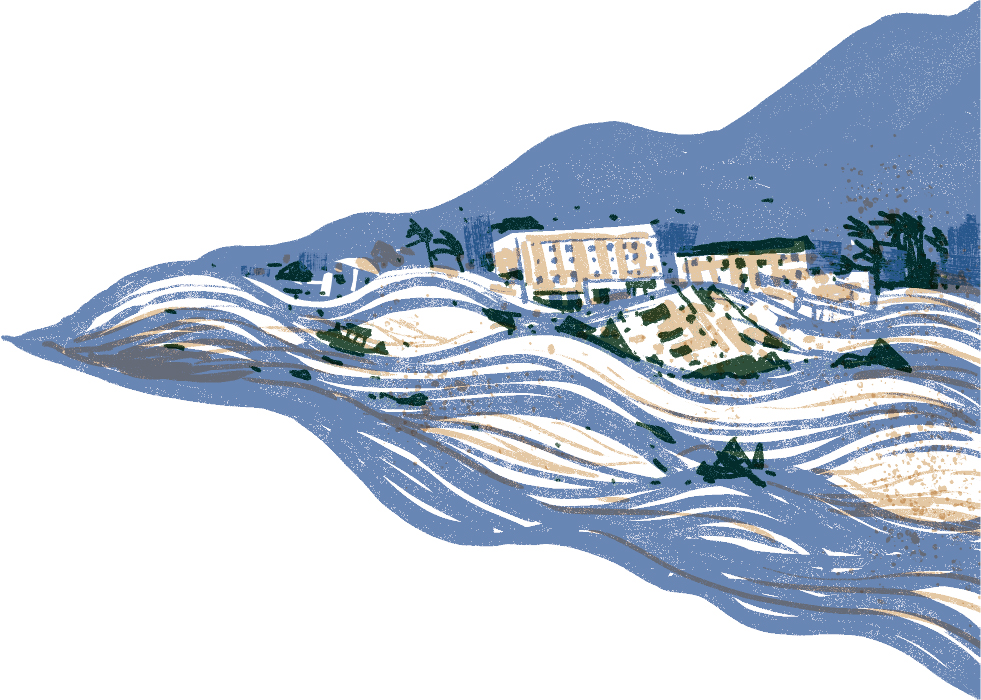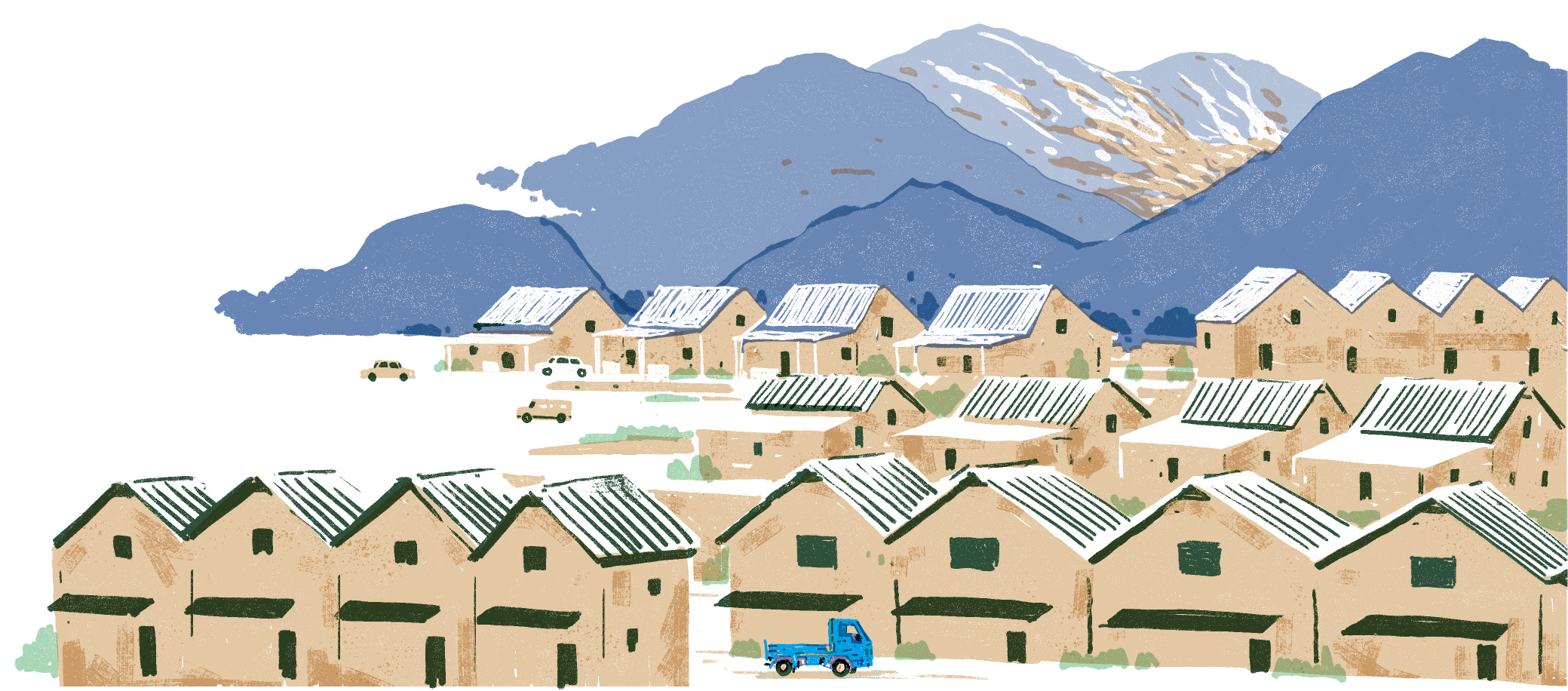On August 8, 2009, Typhoon Morakot devastated Southern Taiwan, with up to 70% of the affected households being indigenous people. The typhoon not only caused the largest composite disaster that Taiwan has suffered in the last century, but also brought about a series of irreversible impacts on the lives of indigenous communities thanks to the permanent housing policy that was immediately launched after the disaster.
Hsieh Chih-Cheng is the former director of the 921 Earthquake Relief Foundation and deputy director of the National Alliance for Post-Earthquake Reconstruction (both are now disbanded). As he points out, the governmental resettlement program for disaster victims can be divided into three types in terms of the length of time: the “temporary resettlement” for less than three months, the “intermediate resettlement” for between three months to two years, and “long-term resettlement” for more than two years. The corresponding types of housing arrangements are shelter space, prefabricated housing, and permanent housing, respectively.
An Immediate Permanent Housing Policy
In One Go
Post-disaster reconstruction work involves a wide range of complex issues. Take the 921 Earthquake and Typhoon Morakot Disaster for example. The attitudes and approaches taken by the authorities were completely different. For the 921 Earthquake, the intermediate resettlement program was adopted, providing three alternative programs for disaster victims to choose from to meet their various needs. These programs included prefabricated housing, rental subsidies, and sale of public housing.
As to the subsequent reconstruction, such financial support as low-interest or interest-free loans, as well as funds from private donations, were offered, with the former provided by the government and the latter distributed by the 921 Earthquake Relief Foundation. The affected households were in full charge of the reconstruction plan, and a committee was formed to implement it with the assistance of the private sector. In cases where relocation was required, the site was still in the vicinity of the original residence.
However, in dealing with Typhoon Morakot Disaster, the government took a completely different approach. The reconstruction policy was originally based on the principles of “moving away from the danger without moving away from the community” or, if necessary, “remaining in the township even if leaving the village.” Yet, in just less than 20 days, the authorities expeditiously finalized the permanent housing plan as a once-forall solution without going through the intermediate resettlement phase, which formed a sharp contrast to the response to the 921 Earthquake.
Hsieh suggests such a difference can be due to three reasons. Firstly, as the typhoon caused large-scale landslides across the mountains, reconstruction in the original place became extremely difficult. Hence the central government advocated placing the conservation of national land in top priority to allow mountain forests a chance to recover. Secondly, the permanent housing policy was backed by several NGOs which actually dominated the process of decisionmaking. Among them, the most avid supporter was Taiwan Buddhist Tzu-Chi Foundation, which had been actively lobbying for permanent housing as the solution and received a positive response from the government. Thirdly, to make reconstruction a success in one go, issues of prefabricated housing from the 921 Earthquake resettlement program were revisited in a wider context. Several problems were highlighted such as oversupply, unnecessary demolition expenses, and a few communities being unable to support themselves and therefore relying on prefabricated houses for permanent shelter. In light of this, the NGO-driven relocation became the core objective of the reconstruction policy for Typhoon Morakot Disaster.

Flawed Relocation Plan and Challenges
for Residents in Hazardous Areas
Besides the expeditiously finalized permanent housing policy, the Legislative Yuan passed the Special Act for Post-Typhoon Morakot Reconstruction on August 27, 2009 (now annulled). According to Article 20 of the act, forresidents on the land determined as “having safety hazards” or “designated as specific zones”, the central or local government is empowered to impose restriction of occupancy or forced relocation within a limited time period. This practice was quite rare in the world at that time. In compliance with the Act, within five months, the central government approved 160 areas to be designated as specific zones, of which those formerly belonging to indigenous peoples making up 72.5%. This has made a tremendous impact on the affected indigenous communities.
The enforcement of this article aroused considerable controversy and debate.” For us, to ‘relocate the village’ means the relocation of the entire community, including our homes, farmland, and communal territories altogether. However, the ‘designation of specific zones,’ as proposed by the government, entails enclosing the entire territory that belongs to us and prohibiting us from using it. Restrictions are also imposed on land use. Despite the fact that we have the ownership of the land, in reality, we are denied any access to it. What we are given in return is a just permanent house and nothing else. They must be aware that separating indigenous people from their native land is tantamount to killing the entire community. Therefore, we consider designating specific zones an essentially ‘genocidal’ act and it should not be linked to ‘relocating villages away from hazardous zones,’” notes Binnaliu (transliteration), a resident representative from Rukai Indigenous Groups Youth Alliance.
According to information provided by the Morakot Post- Disaster Reconstruction Council, up to 88.7% of the 3,096 households that ultimately accepted the permanent housing plan became diaspora. The contract drawn by the government explicitly required that accepting occupants change their household registration and that they shall not return to their original residence to spend the night. “It’s like swapping their houses and land in the mountains for permanent houses in the lowlands,” commented Hsieh, adding that for indigenous people, they have lost not only their homes, but also the connection to their roots and culture.

Equal Emphasis on Infrastructure
and Livability for Relocated Communities
As Hsieh points out, when the environment of a community is damaged to such an extent to endanger its residents, relocation becomes a must. Hence relocation as a solution to post-disaster resettlement is not completely rejected worldwide. But the question is what to do and how to do it. The permanent housing plan is advantageous in that it requires less time for construction and ensures quick completion of the reconstruction task. But in the case of Typhoon Morakot, the controversy was aroused because the government settled on the permanent housing plan too hastily without allowing indigenous people to fully participate in the process of decision-making. The affected residents could not make their voices heard and as it turned out, they were left with no choice but to resign themselves to the result.
These affected residents are unable to express their expectations and requirements for their new homes during the reconstruction process. Particularly as far as indigenous communities are concerned, their lifestyles are closely connected to the land thanks to the special nature of indigenous culture. Apart from permanent houses, they also need areas for farming and hunting, a gathering space for discussions on public affairs, venues for traditional rites and rituals, and so on. The elimination of affected residents’ participation in decision-making will result in a series of problems.
Back then when they lived in the mountains, indigenous people had their own farmland and vegetable gardens, which allowed them to be selfsufficient and maintain a living. But after relocating to permanent communities, they lost their farms and were forced to work away from home for livelihood.
What’s more, these newly-built communities were criticized for their restrictive and poor space planning. Since additional construction was banned in the area around permanent houses, the relocated indigenous people found the existing public space insufficient to meet their needs. Take Kucapungane Village, a Pingtung-based Rukai community, for instance. After the typhoon Morakot, the village was relocated to Rinari. There the residents were confronted by the problem of lacking space to serve as balriw (graveyard) for the deceased. This is a serious matter with the Rukai people, because they belief that people must stay together after they die and that the balriw is the place where souls call home. Such a place is therefore of great significance to the Rukai culture, and the absence of it is unbearable to the residents of Rinari. Apart from the insufficient space planning, the cultural features of indigenous communities are also wiped out by the uniformity of permanent houses.
A sound relocation plan should involve not just an ideal planning of housing infrastructure; more importantly, it has to be able to provide residents with a livable environment to meet their multiple needs, such as reconnection to families and communities, schooling, livelihood, religious beliefs, and leisure activities. Only by doing so can it truly support relocated residents to stand on their own two feet and prevent the irreversible decline of indigenous cultures and diaspora of communities.

Full Participation of Victims
should be Aallowed by Social Consensus
Hsieh believes that the relocation plan must be implemented with caution, considering its profound impacts on the lives of the disaster victims. The authorities have to hold intensive discussions and negotiations with affected residents on issues such as site selection, residential layout, space utilization, public facility planning, community connections, and livelihood recovery, etc. The World Bank has also suggested several critical factors for the success of relocation, including the participation of relocated people, adequate communication, cultural compatibility, sense of belonging, low social risk, similar residential design, and comprehensive public facilities.
“The public should be aware that democracy is a learning process. Although the involvement of disaster victims’ participation will inevitably make the reconstruction more time-consuming, this is the price to be paid for.” Hsieh suggests that the period of discussion should last at least as long as one year to allow for tolerance of society, for “it is still unknown to what extent the public will be tolerant of the delay caused by the victims’ participation.”
The varying degrees of damage and impacts make the planning and implementation of post-disaster responses and reconstruction tasks a complex issue. So far, there has not been a universally applicable set of standard operating procedures. Hsieh advocates that the government should take preemptive action to engage in “pre-disaster recovery planning,” covering such issues as evacuation measures, resettlement plans, and housing construction. “The postdisaster reconstruction plans must be initiated right at the moment when a natural disaster occurs. It would be too late to wait until houses are about to be built for relocation.” The situations of indigenous disaster victims in recent years can justifiably provide us with precious lessons to learn from, enabling us to rethink what kind of post-disaster responses and relocation mechanisms are needed in Taiwan to achieve the goals of reconstruction and satisfying the needs of victims.




